 문의하기
문의하기
 TOP
TOP

Guk Daeho has been digging into fundamental problems of paintings for around 10 years since 1995 before he started his oil paintings of scenes that seem like blurry photographs taken by amateurs who could not get correct focus. As the artist studied in Korea and France, Guk has explored the problems of flatness and representation of canvas created by movements of brushes, the relationship between three-dimensional physical object and space, the problems of colors, etc. which has lead him to his today’s paintings.
국대호
GUK, DAE HO
985-92
Graduated from the Department of Painting,
College of Fine Arts, Seoul National University(BFA)
1993-96
Graduated from the Department of painting,
Ecole nationale superieure des Beaux-Arts de Paris(MFA)
1996-98
Graduated from the department of Arts Plastiques,
Paris8 National University(MFA)
SOLO EXHIBITIONS
2011 "ITALIA" Grimson Gallery, Seoul
2011 Gallery k.ark, Seoul
2010 "New York, Paris, Roma" Space INNO, Seoul
2010 AKA Gallery, Jeonju
2010 Soohoh Gallery, Bundang
2009 "Paris" Gallery WON, Seoul
2008 Korea Art Center, Busan
2008 The Korean Culture and Arts Foundation(KCAF),
2008 Seoul Arts Center, Seoul
2007 Scene by Seoul Cosmedi, Seoul
2007 "New York" VIT Gallery, Seoul
2006 retrospective(1996-2006), Kumho Museum of Art, Seoul
2006 The Asiana lounge of Incheon International Airport, Incheon
2006 Gallery & Decoration Chai, Seoul
2005 Gallery Mimax, Seoul
2006 Space HAAM, Seoul
2003 Paik Hae Yuong Gallery, Seoul
2002 CHOSUN Gallery, Seoul
2001 Gallery SHILLA, Taegu
2000 Gallery SEO WHA, Seoul
1999 Kumsan Gallery, French Cultural Service, Seoul
1998 Vitry Municipal Gallery, Vitry-sur-Seine, France
1997 "UN JOUR, UN PEINTRE" Space Eiffel-Branly, Paris
1996 Gallery GALATRE, Paris
1996 Gallery Jacques BARRERE, Paris
1996 Gallery Etienne de Causans, Paris
1995 ICON Gallery, Seoul
GROUP EXHIBITIONS
2011 Color x Art x Play x 3, Aram Art Gallery, Goyang
2011 “beautiful revolution” Gallery Safi, Seoul
2010 Bangladesh Biennale, Dhaka, Bangladesh
2010 Kunst & Living 2010, Kunstmesse Rotterdam, Niedelande
2010 Written on the Wind, Space INNO, Seoul
2010 Painting & Shadow, EON Gallery, Seoul
2010 The more, the better, Sun Gallery, Seoul
2009 Wonderful Pictures, Ilmin Museum of Arts, Seoul
2009 Light and Shade, Soohoh Gallery, Youngin
2009 Color x Art x Play, Aram Art Gallery, Goyang
2009 Summary Dreams, VIT Gallery, Seoul
2009 Another Masterpiece New Acquisitions, Gyeonggi Museum, Ansan
2009 New Acquisitions, National Museum of Contemporary Art, Korea
2008 Essentielle, Korea Art Center, Busan
2008 Cityscape, Grimson Gallery, Seoul
2008 Icon of Asia - Asian contemporary, EM Art Gallery, Beijing
2008 Seoul Open Art Fair(Korea Art Center), COEX, Seoul
2008 Art in Busan 2008, Busan Museum of Art, Busan
2008 5SENSES, Keumsan Gallery, Heyri, Korea
2008 "Reality in Contemporary Art 2008" Cyart Gallery
2008 Beautiful co-existence Exhibition, Gallery mayjune, Seoul
2008 Sour and sweet, UrbanArt, Seoul
2008 2008 Seoul Art Fair-Busan(Korea Art Center), Busan, Korea
2008 Exhibition of 8 teachers, Chai Gallery, Seoul
2008 Light of Nam-do, Zami Gallery, Gwwangju
2007 Seoul Open Art Fair(VIT Gallery), COEX Cenvention Hall, Seoul
2006 Open 1-year Exhibition, Space Haam, Seoul
2006 Seoul National University open 60 years Exhibition,
Museum of SNU
2005 Song-Eun Grand Prix Exhibition, Seoul Arts Center, Seoul
2004 INSA Art Festival, INSA Art Center, Seoul
2004 Time difference, INSA Art Center, Seoul
2004 The deserving 6 persons of 2004, Sisun Gallery, Seoul
2002 2002 Invitation of Contemporary Art, Daegu
Culture and Arts Center
2001 Foundations-Perspectives, SEOUL Museum, Seoul
2001 Song-Eun Grand Prix Exhibition, Gongpyong Art Center, Seoul
2000 Ecole de Seoul, kwanhoon Gallery, Seoul
2000 WORKS ON PAPER, Gallery SEO WHA, Seoul
2000 Trace-trace eternal and pure surface, C.A.I.S. Gallery, Seoul
2000 New Millennium of 3.24, Seoul Metropolitan Museum of Art, Seoul
2000 Rabbit & Submarine, Seoul Metropolitan Museum of Art, Seoul
1999 Another Flow in Korea, Moran Museum, Masuk, Seoul
1999 Skin care, Sai Gallery, Seoul
1999 Korean Artists Festival, Sang Gallery, Seoul
1998 Prix des Volcans, Clermont-Ferrand, France
1998 Salon of Juene Peinture, Space Eiffel-Branly, Paris
1998 Jeunes Peintres Coreens, Korean Culture Center, Paris
1998 33 Korean Young Artists, Palais de Bondy, Lyon, France
1997 Exhibition of two Artists, Korean Culture Center, Paris
AWARD & Etc
1999 Creating a wall painting at Paris Croix St-Simon Hospital, France
1998 Jury of Novembre a Vitry, France
1997 Grand Prize, Novembre a Vity, France
1996 This year's budding artist selected by Paris-Gallery Association,
sponsored by Paris-National School of Art
1998 This year's 8 best artist selected by young artists association in France
1995 Prize of painting at the Competition of ART and Apple, France
COLLECTIONS
National Museum of Contemporary Art, Korea, Busan Museum of Art,
Gyeonggi Museum of Modern Art, Paris Croix St-Simon Hospital,
Vitry Municipal Gallery, Perriet-Jouet, Seoul National University,
The Ministry of Foreign Affairs and Trade, Marriott Yeouido Park Centre-Seoul
Tomato savings bank, Image21, U.Square, Sheraton incheon, Sigongsa
Art Bank Korea, Daelim Museum, Handok Pharmaceuticals co
1992 서울대학교 미술대학 서양화과 졸업 (BFA)
1995 파리 국립 미술학교 회화과 졸업 (MFA)
1998 파리 8대학교 대학원 조형예술학과 졸업 (MFA)
주요 개인전
2017 환기재단 작가전, 색‧채‧집, 환기미술관, 서울
2016 호서대학교 아산캠퍼스 중앙도서관, 아산, 충청남도
2015 “Place of memory, Cities” TAKSU Gallery, 싱가포르
2014 THE GALLERY D, 대명리조트 델피노, 설악
2013 “San Francisco” 수호갤러리, 분당
2012 “Seoul” 아틀리에 아키, 서울
2011 “ITALIA" 갤러리 그림손, 서울
2009 "Paris" 갤러리원, 서울
2008 코리아 아트센터, 부산
2007 "New York" 빛갤러리, 서울
2006 Retrospective(1996-2006), 금호미술관, 서울 등 다수
주요 단체전
2016 연애의 온도, 서울미술관, 서울
2015 2인전 (국대호, 유봉상), 갤러리 송아당, 서울
2015 랜드마크 : 도시의 찬란한 꿈, 63스카이아트 미술관, 서울
2015 유연한 시선, 모란미술관, 마석
2014 사진과 회화의 동행 (국대호, 주도양 2인전), D갤러리, 대명리조트 비발디파크
2014 색(色)의 언어, 모란미술관, 마석
2014 Between Sense And Sensibility,전, TAKSU갤러리, 싱가포르
2014 Hommage a Whanki ll, 환기미술관, 서울
2013 파사드 부산, 부산 시립미술관, 부산
2011 듀얼이미지 Dual Images, 포항 시립 미술관, 포항
2011 색 x 예술 x 체험 x3, 고양 어울림 미술관, 고양
2010 제14회 방글라데시 비엔날레, 다카, 방글라데시
2010 unique & useful, 인터알리아, 서울
2010 “색과 빛, 그 지점“전, 인터알리아 , 서울
2010 “경계의 교차“전, 인터알리아 , 서울
2009 색을 거닐다, 인터알리아 , 서울
2009 원더풀 픽쳐스, 일민미술관, 서울
2009 색 x 예술 x 체험, 고양 어울림 미술관, 고양
2009 경기도 미술관 신소장품전 (공공의 걸작), 경기도 미술관, 안산
2008 Essentielle전, 더 스페이스(코리아 아트센터), 부산
2008 Wonder brand전, 가나아트 포럼 스페이스, 서울
2008 Lead in KOREA, WITH Space, 베이징
2008 아이콘 오브 아시아 - 아시안 컨텐포러리, 이엠아트 갤러리, 베이징
2008 돌아와요 부산항에전, 부산시립미술관, 부산 등 다수
작품소장
국립현대 미술관, 서울시립 미술관, 부산시립 미술관, 경기도 미술관, 미술은행,
광주 시립미술관, Croix St-Simon 병원(파리), 외교통상부, 서울대학교 호암생활관,
대림미술관, 비트리 시립미술관(프랑스), (주)페리에 쥬에(프랑스), 메리어트 여의도 파크센터,
63스카이아트 미술관, 시공사, 한독약품, 광주 유∙스퀘어 문화관, 쉐라톤 인천호텔,
비발디 파크, 부산 파라다이스 호텔, 서울 동부법원, 파라다이스 시티 등 다수.
 S20164510(detail), oil on canvas, 45x45cm, 2016
S20164510(detail), oil on canvas, 45x45cm, 2016
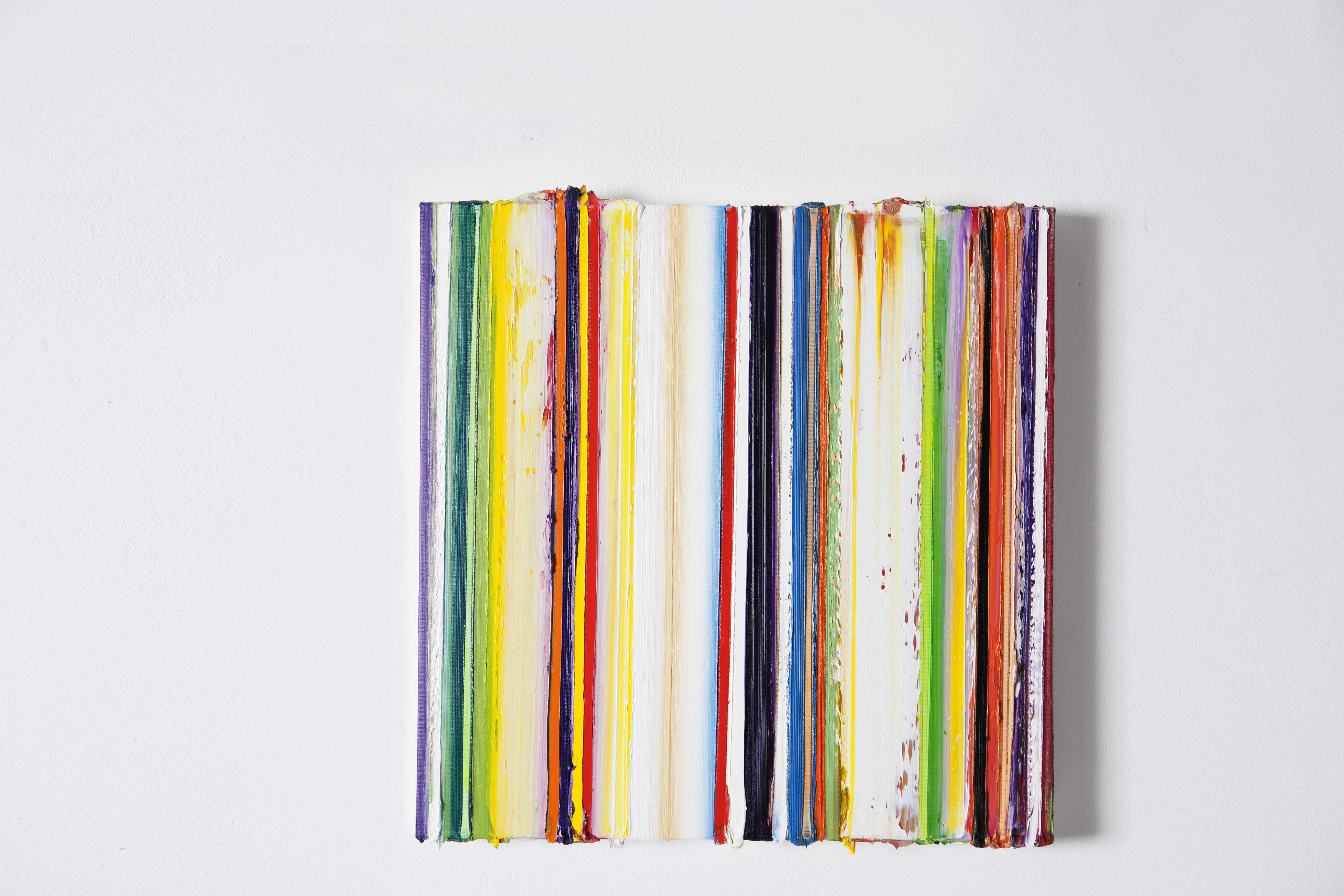 S20164510, oil on canvas, 45x45cm, 2016
S20164510, oil on canvas, 45x45cm, 2016
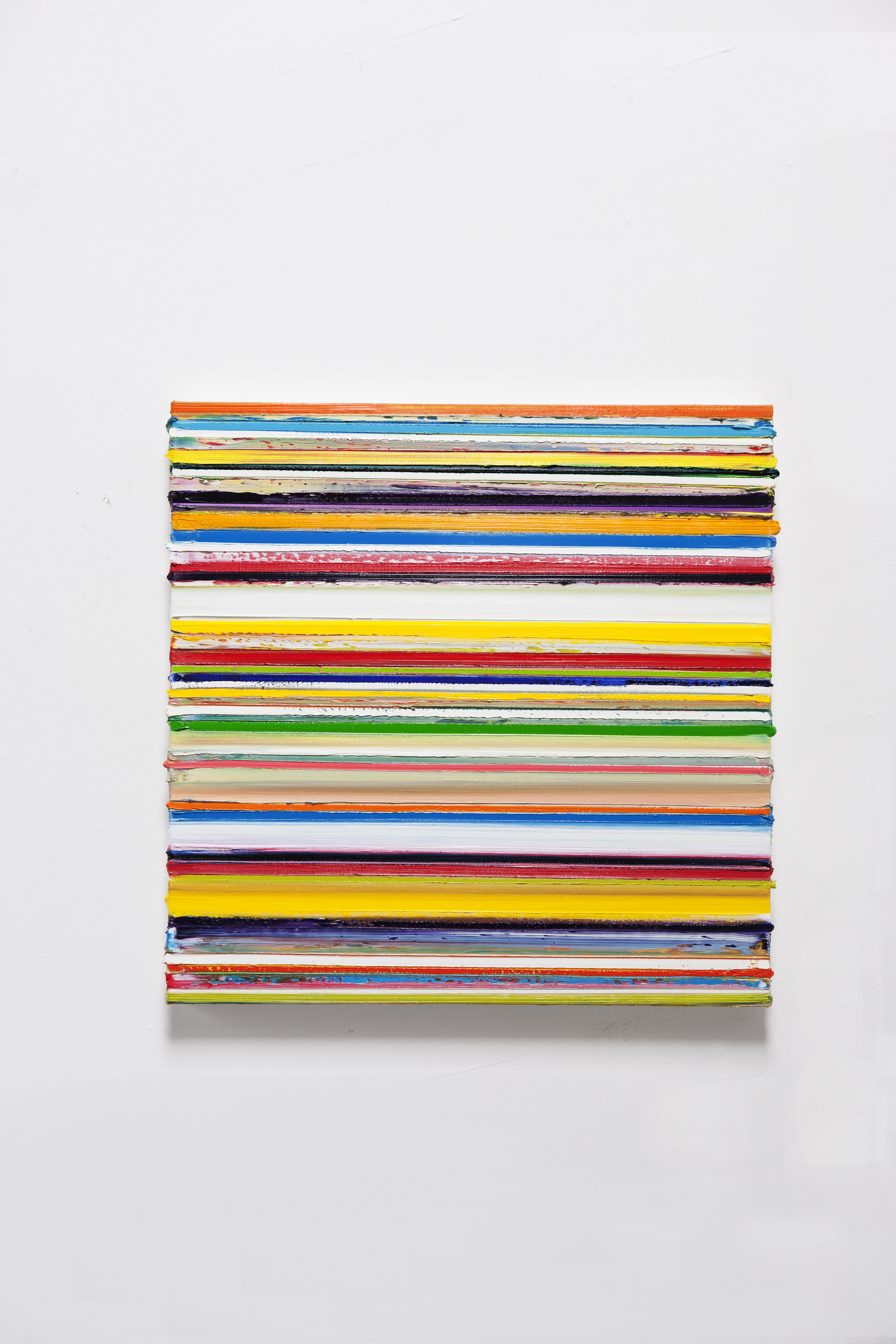 S2016772, oil on canvas, 70x70cm, 2016
S2016772, oil on canvas, 70x70cm, 2016
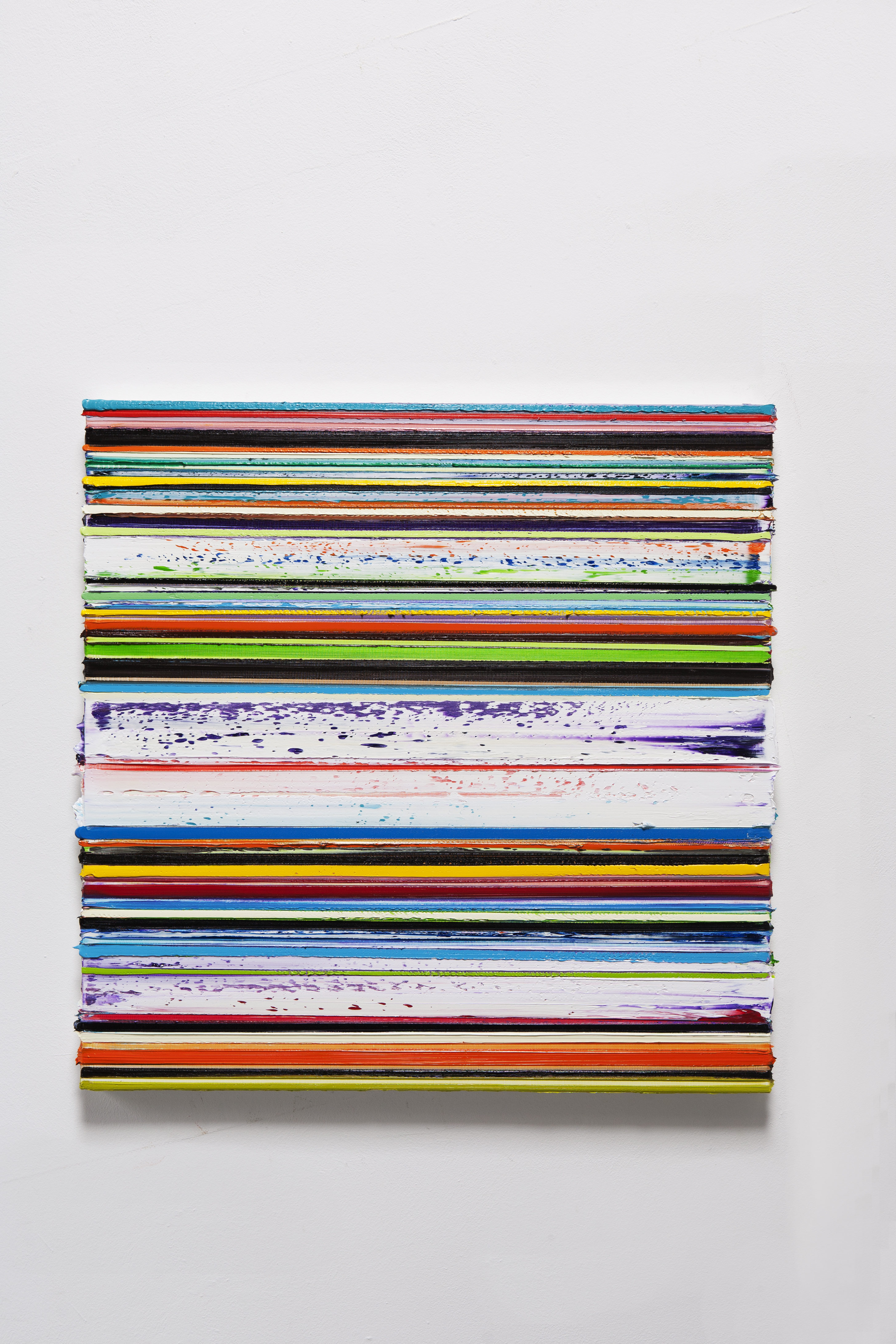 S2016881, oil on canvas, 80x80cm, 2016
S2016881, oil on canvas, 80x80cm, 2016
 S2016506, oil on canvas, 120x80cm, 2016
S2016506, oil on canvas, 120x80cm, 2016
 Jelly Bean-083, ∅80cm, oil on canvas, 2010
Jelly Bean-083, ∅80cm, oil on canvas, 2010
 Jelly Bean-080, ∅80cm, oil on canvas, 2010
Jelly Bean-080, ∅80cm, oil on canvas, 2010
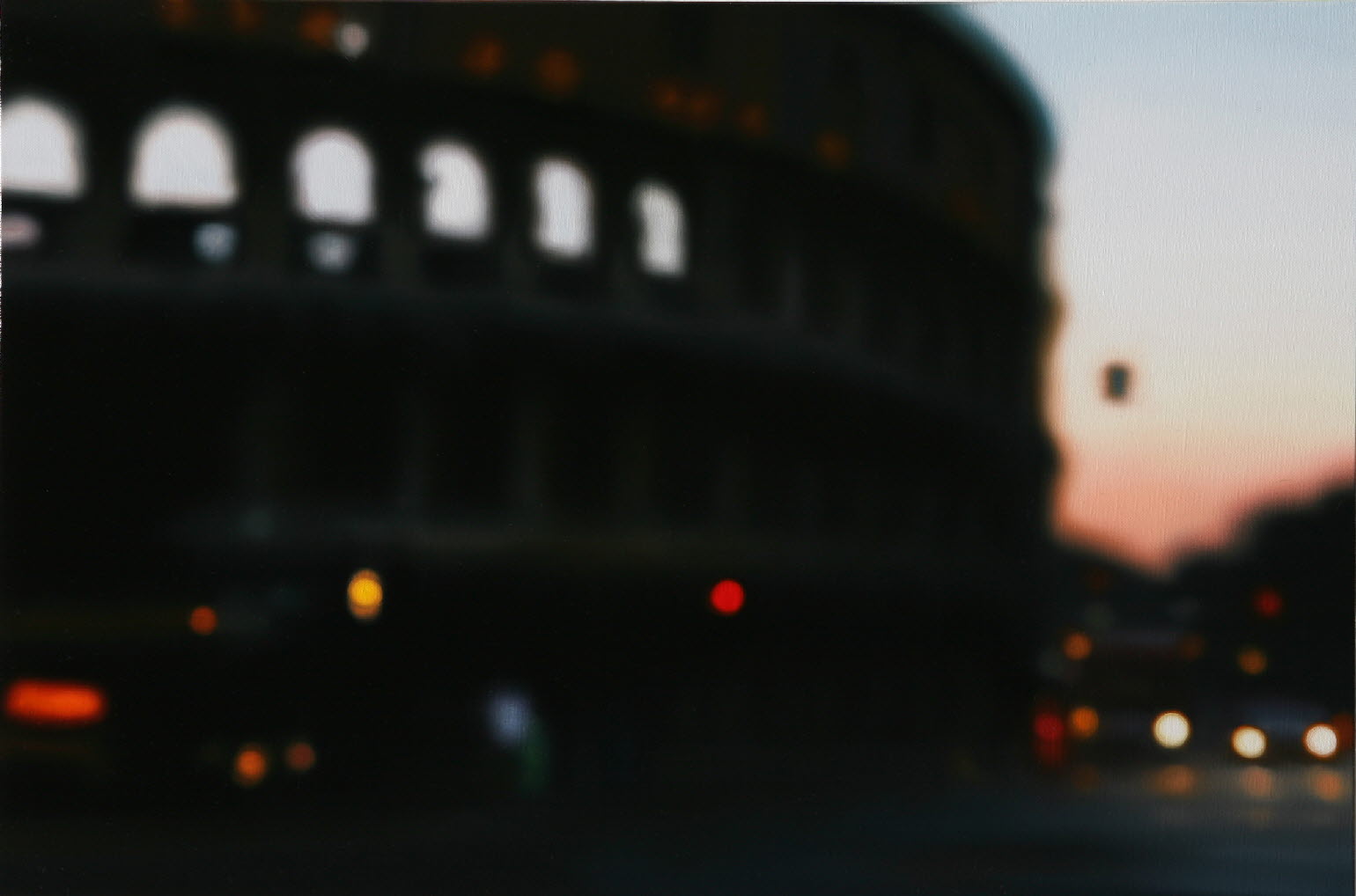 Roma-20, 21x49cm, oil on canvas, 2011
Roma-20, 21x49cm, oil on canvas, 2011
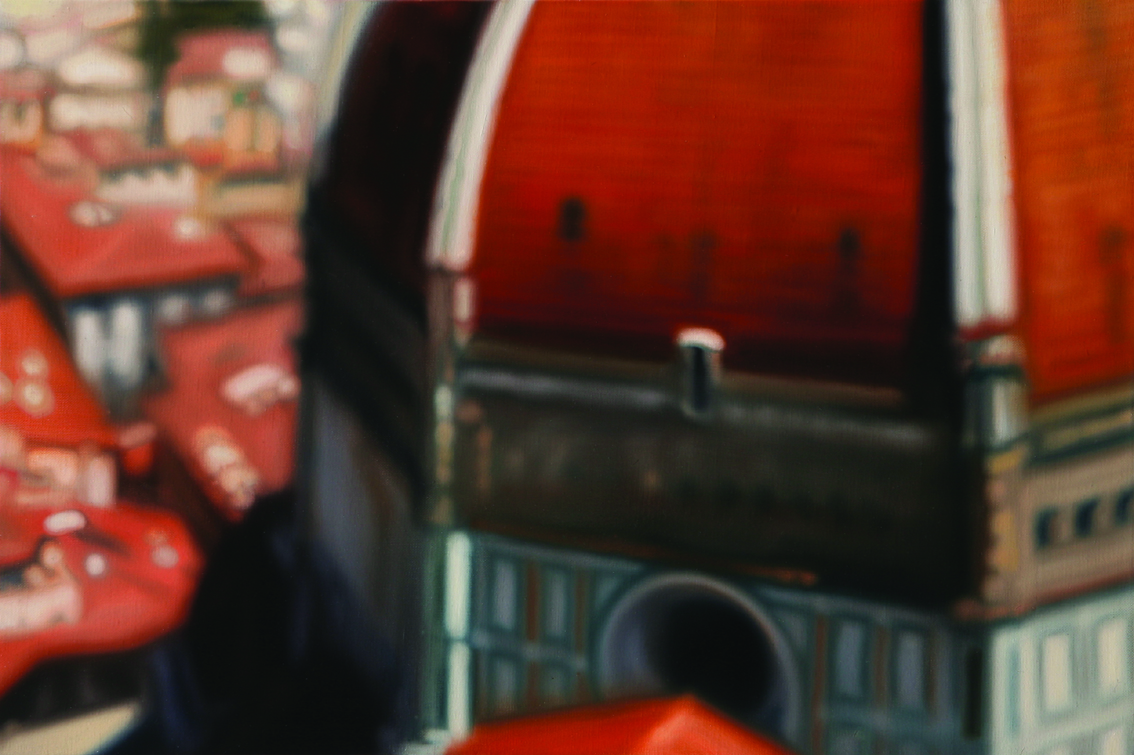

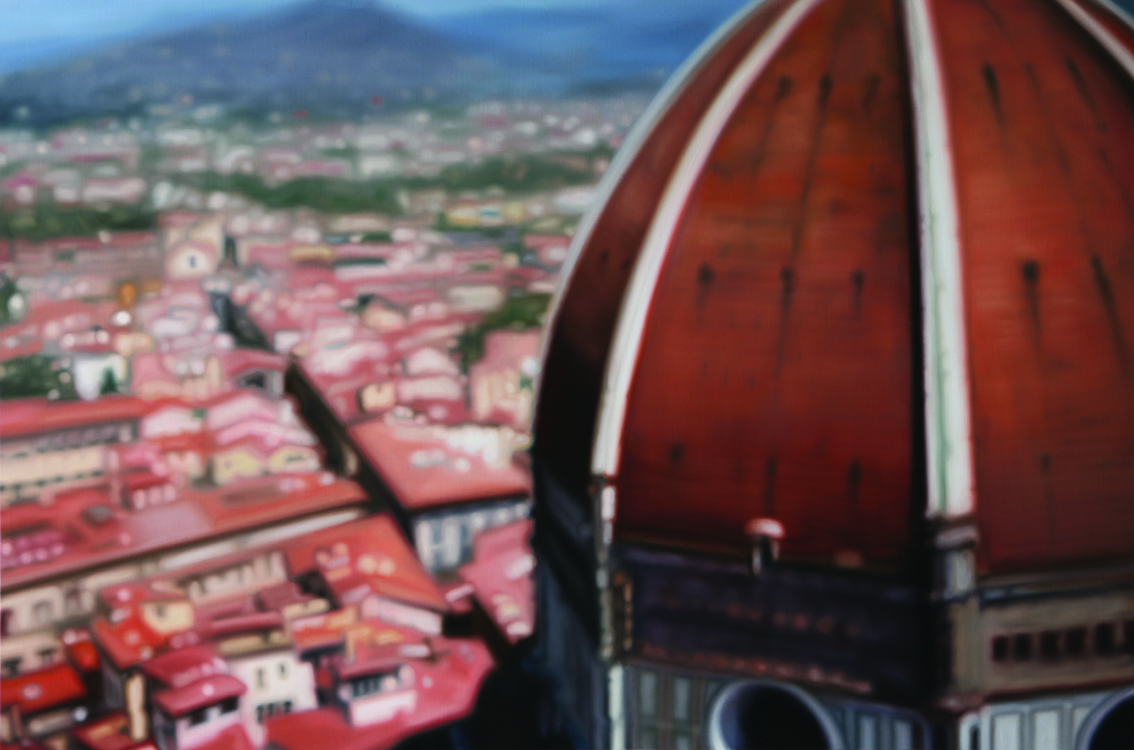
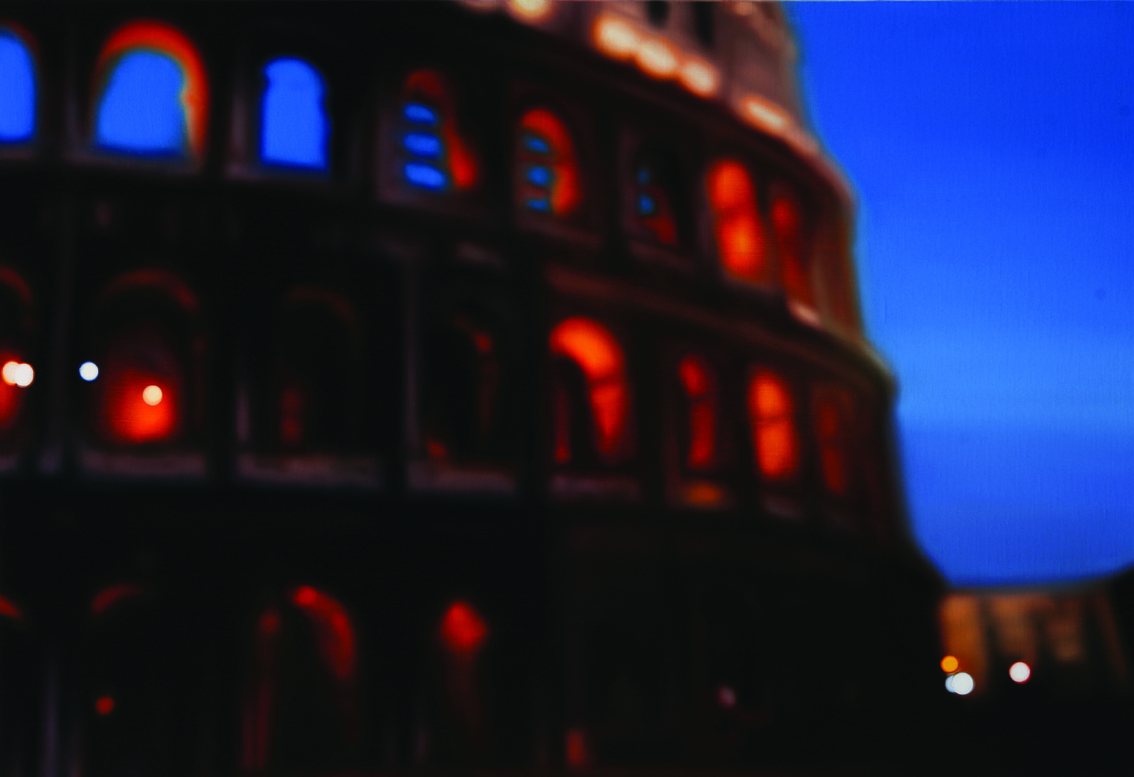
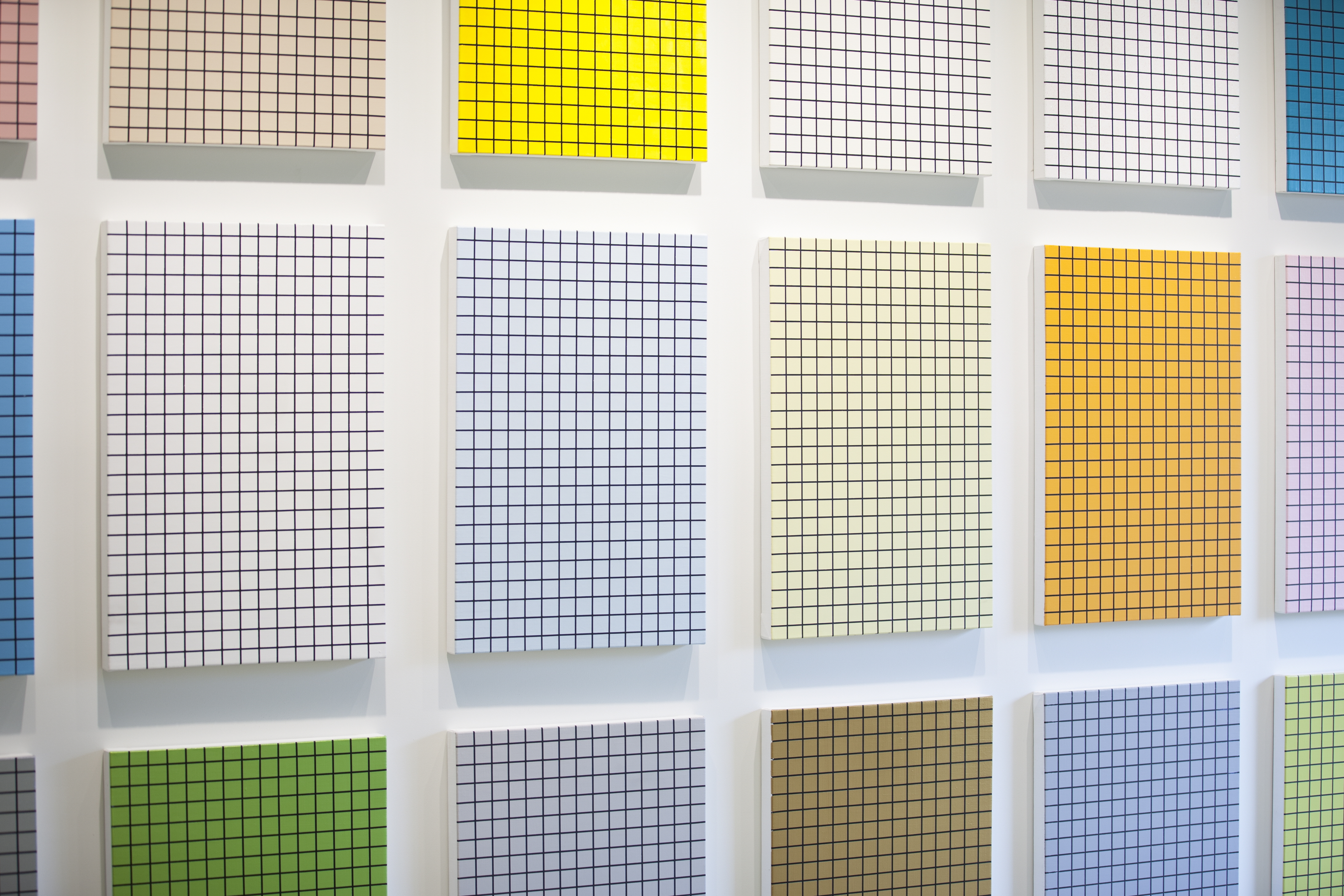

Shock Absorber Eco System with Bokeh
Kyehoon Hah, art critic
Guk Daeho has been digging into fundamental problems of paintings for around 10 years since 1995 before he started his oil paintings of scenes that seem like blurry photographs taken by amateurs who could not get correct focus. As the artist studied in Korea and France, Guk has explored the problems of flatness and representation of canvas created by movements of brushes, the relationship between three-dimensional physical object and space, the problems of colors, etc. which has lead him to his today’s paintings.
When Guk traveled to New York, Paris and many cities of Italy, he took photos of city sceneries that made impressions to him. Some of the sceneries are famous landmarks of the city, but also Guk’s photos of coincidently caught by the artist’s sight such as a corner of a narrow back street or a window of an apartment, a site of underground pass-way or passing cars and walking people are found often. Especially the artist gets caught by the atmosphere of everyday life at unusual place and mysteriousness of colors.
Guk’s painting process is by recalling his personal place of memory taken in photos and he uses the photos as resources for his image representation paintings. Whoever visits his studio will notice that he is an artist who sits in front of a white canvas, and thinks, and plans, and starts working; such character is also shown in his way of creation. By such way, the places in Guk’s memory are recalled one by one, by countries and by cities and they come out toward us.
In history of photograph, the early black and white photos show big differences to today’s photographs, but the impressionism artists after the mid 19th century are told that they were intimidated by photographs. In fact, in today as well, when imagining this world without photographs, it is possible that the activities of painters would be more expanded. But Guk is waving off the concerns of many western modernism artists who felt intimidation by the invention of photography in about 100 years ago, and Guk seems that he is one of the artists who successfully coming along with photography and painting. The biggest strength of photography is at the realistic representations, and at the role of being a warehouse of memories beyond time. In fact, our eyes see many things and save the things as memories which help us understand inner characteristics of people objects. Photography has been recognized is an extension of our eyes because they save and replay our memories. As camera lens advances, focus depth control became possible; cameras are now possible to emphasize particular subjects among surrounded environment just like how our eyes do. As cameras take images into rectangular view finders, it shares the same way of representation as paintings which represent images on rectangular canvases.
In fact in modernism painting history, artists confronted and followed photography both. Impressionism artists did expressed subjects’ of a moment, did used snappiness of snap photos, meaning, though they tried to keep distance to photography because they thought that photography was threatening them, they adopted the revolutionary composition of photography at the same time. Also, photo-realism artists challenged themselves for ultimate precise representativeness of photography and pursued to overcome mechanic realism of photography and to achieve surrealistic painting effects.
Guk Daeho himself also, photography does important role in his creation process. The artist goes through processes such as capturing and keeping images, and interpreting, etc. The sceneries in the artist’s canvases are of where the artist used to live or where he traveled which are received as everyday life scenery for audience, but for the artist, they are representations of a merged particular time and place from his memory. This is where the artist needs a device to create common area between the artist’s subjective experience’s particularity and audience’s objective visual experience.
The way to avoid feeling different or being against is to set up shock absorber and wait patiently. In fact, we even find geographical eco system of shock absorbers. Alsace-Lorraine, the area where Germany and France meet, or where Gyeongsang Province and Cholla Province meet, the areas show certain linguistic-social cultural aspects. At such areas, the different characteristics of two different areas exist together at first, and as time flows, they get merged to each other and make new characteristics sometimes. The shock absorber between subjective experience of the artist and the general sense of audience are the blurry scenes, images of delayed time created by the artist intentionally.
Partial Bokeh(blurry) effects, the technique that makes images blurry, transform subjectively viewed exotic city sceneries by the artist into general images and make the communication with audience smoother. Guk’s works to be exhibited this time are representations of many cities of Italy; not only the fresh compositions but also thorough dessins and outstanding colors, skilled techniques of the artist that provide imaginations take away not only eyes of audience but also their hearts.
초점 흐리기가 빚어내는 시각적 완충지대의 생태계
하계훈(미술평론가)
마치 서투른 사람이 제대로 초점을 맞추지 못해서 희미하게 찍힌 사진 같은 장면을 캔버스 위에 유화로 표현하는 국대호는 이러한 작품에 착수하기 전에 이미 1995년경부터 10여 년 동안 회화의 근본적인 문제를 천착하는 작업에 몰두해왔다. 한국과 프랑스에서 공부하면서 작가는 붓의 움직임에 의해 형성되는 화면의 평면성과 재현의 문제, 3차원적 물질과 공간과의 관계, 색채의 문제 등에 대한 탐구를 거쳐 현재와 같은 작품에 이르고 있다.
국대호는 뉴욕, 파리, 그리고 이탈리아의 여러 도시 등을 여행하면서 순간순간 인상적으로 다가오는 도시의 모습을 카메라에 담아왔다. 그가 담은 장면들은 그 도시의 랜드마크 역할을 하는 유명한 장소일 경우도 있지만, 그보다는 낯선 방문자로서의 작가의 시선에 우연히 들어오는 골목의 한 귀퉁이나 아파트의 창문, 지하도 한 구석이나 지나가는 차와 길을 걷는 사람의 모습 등일 경우도 적지 않다. 특히 작가는 낯선 곳의 평범한 일상의 장면이 만들어내는 분위기와 색상의 미묘함에 사로잡히기도 한다.
국대호는 이렇게 사진에 담아놓은 개인적 추억의 장소를 다시 불러오는 프로세스로서 사진을 바탕으로 하는 이미지를 재현하는 회화작품을 제작하고 있다. 작가의 작업실을 방문한 사람이라면 누구나 바로 알아차릴 수 있는 것처럼 국대호는 잘 정돈된 작업실에서 빈 캔버스를 마주한 상태에서 생각하고 계획하며 작업에 착수하는 작가며 이러한 성격은 그의 작업을 풀어내는 방식에서도 그대로 드러난다. 이러한 방식에 의해 국대호의 기억 속의 장소는 나라별로 도시별로 차곡차곡 되돌려 작품 속에서 하나하나 우리에게 제시되고 있다.
사진의 역사를 살펴보면 초기의 흑백 사진은 오늘날 우리가 바라보는 사진의 이미지들과 비교할 때 커다란 차이를 보여줌에도 불구하고 19세기 중엽이후 인상파 시대의 화가들은 그러한 사진으로부터 상당한 직업상의 위협을 느꼈었다고 한다. 사실 오늘날에도 사진의 부재를 상상해본다면 화가들의 활동 반경이 보다 확대될 수 있을 것이라는 짐작이 가능할 듯하다. 하지만 국대호는 100여 년 전 사진의 등장으로 위기감을 느끼던 서양 근대미술의 많은 작가들의 우려를 떨쳐버리고 사진과 회화의 동행에 성공하고 있는 작가 가운데 한 사람이라고 볼 수 있다.
사진의 장점은 무엇보다도 사실주의적 재현성에 있으며 순간의 기억을 영원히 보존할 수 있는 초시간적 기억 창고 노릇을 해준다는데 있다. 실제로 우리의 눈은 많은 것을 보고, 그것을 기억에 담아 응시의 대상이 되는 사람이나 사물의 내재적 성질까지도 파악할 수 있도록 도와준다. 사진은 이러한 눈의 역할의 연장선에서 우리의 기억을 보존하고 재생해주는 도구로 간주되어왔다. 렌즈가 발달하여 초점 심도를 조절할 수 있게 됨으로써 사진기는 이제 더욱 더 인간의 눈처럼 특정 대상을 주변 환경에서 돋보이게 집중적으로 바라볼 수 있게 되었으며, 뷰파인더를 통해 사각의 프레임 속에 이미지를 담아냄으로써 그 출발에서부터 네모난 캔버스 위에 이미지를 재현하는 회화와의 재현 형식상의 공통점을 드러내었다고 볼 수도 있다.
실제로 근대회화사에서 화가들은 사진에 대항하기도 하고 동조하기도 하였다. 인상파 화가들은 순간적인 인상에 입각한 대상의 표현과 마치 스냅사진을 찍는 듯한 구도(snappiness) 등을 채택함으로써 한편으로는 자신들의 창작활동을 위협한다고 생각하고 거리를 두려 했던 사진의 기능을 두려워하면서도 다른 한 편에서는 부분적으로 사진이 갖는 혁신적인 구도를 차용하는 것이라고 볼 수 있다. 그런가 하면 포토리얼리즘 작가들은 사진의 정밀한 재현성에 도전하여 사진의 기계적 사실성을 넘어서는 초사실적인 회화적 표현을 추구하기도 하였다.
국대호의 경우도 작품의 제작 과정에서 사진의 역할이 중요하게 작용한다. 작가는 사진을 통한 이미지의 포착과 그 이미지의 보존, 재해석 등의 과정을 거쳐 작품을 탄생시킨다. 작가의 화면 속에 제시되는 장면들은 작가 본인이 그곳에 체류하거나 여행한 경험이 있는 곳으로서 관람객들에게는 평범한 일상의 한 장면으로 제시되지만 작가 본인 에게는 특정한 시간과 장소를 함축하는 기억 속의 한순간을 재현한 것이다. 따라서 이 지점에서 작가는 자신이 갖는 주관적인 경험의 특정성과 객관적인 시각 경험을 하는 일반 관람객들의 보편적 인식 사이의 괴리를 좁힐 수 있는 공감대를 생성하는 장치를 필요로 하게 된다.
서로 다른 개체의 상호 교차와 접촉에서 발생하는 이질감과 마찰을 피하는 방법은 완충지대를 설정하고 시간을 가지고 기다리는 것이다. 실제로 오늘날 우리들은 지리적으로도 이러한 완충지대의 생태를 어렵지 않게 목격한다. 독일과 프랑스의 접경지역인 알자스-로렌 지방이나 경상도와 전라도가 만나는 지역에서의 언어사회학적 문화현상 등이 그 좋은 예가 될 수 있을 것이다. 이곳에서는 두 지역의 특성이 공존하고 시간이 지남에 따라 그것들이 합체하여 새로운 특성이 나타나기도 한다. 국대호의 작품에서 드러나는 작가의 주관적인 경험과 관람자의 보편적 인식 사이의 완충지대는 곧 작가가 의도적으로 시간을 묵혀 현재의 시점으로 제시하는 기억의 이미지들의 초점을 흐리게 만드는 장면들일 것이다.
부분적으로는 빛망울(Bokeh)현상이라고도 불리는 의도적인 초첨 흐리기 기법은 국대호가 주관적으로 바라본 이국적인 도시의 모습을 보편적 이미지로 전환시켜 관람객과의 소통을 보다 부드럽게 하는 역할을 한다. 이번에 전시되는 작품들은 작가가 방문했던 이탈리아의 여러 도시들을 재현한 것들로서 작품의 신선한 구도뿐 아니라 소묘(disegno)에 충실하면서도 이를 뛰어넘는 색채와 상상력을 제공해주는 작가의 숙련된 테크닉 덕분에 작품을 바라보는 이들은 눈뿐만 아니라 마음까지도 사로잡히게 되는 것이다.


